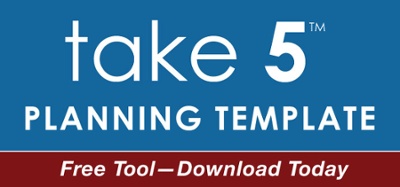March 2, 2020
Your Guide to Communicate Proactively to Employees in Response to Coronavirus
Written by:
David Grossman

With the number of confirmed cases of coronavirus growing around the globe, it’s more important than ever for companies to be talking with – and listening to – their people.
As in all potential crisis situations, being open, proactive, candid, clear and frequent with communication is the best practice. While large multi-national employers will face the biggest questions and planning needs, every organization – no matter the size – should have a plan in place for communicating with its workforce about the coronavirus.
Every Organization Should be Communicating About Coronavirus
Every organization should communicate to their employees about coronavirus and we recommend your messages be comprised of four core components:
- How you’re keeping people safe. Share anything you’re doing to support employees and/or customers impacted by the virus. Anticipate questions on people’s minds such as what they can do to stay healthy. Reassure employees that you’re on top of the situation and doing everything possible to keep them safe.
- What the expected impact will be on the business (and people’s jobs). Are you making any changes to operations because of the coronavirus? Will you be adopting new policies about working from home? Will video conferences or conference calls be utilized in place of in-person meetings where possible? Should I still plan to go to that trade show? Do you expect an impact to earnings?
- Empathy for the fear/concern people have. Whether people are at high risk or not, it is natural to have concerns with a high-profile event like the coronavirus. Be compassionate and recognize their concerns.
- Where employees can go for more information. Who is the key point of contact at your company for questions about company policies and practices around the coronavirus? How do employees contact this person or team? Consider sharing useful links for accurate information and updates about the coronavirus such as the World Health Organization (WHO) and the Centers for Disease Control and Prevention (CDC).
Beyond these “core four” messages for all employees, different segments of your employee population will have other questions on their minds. Think about your employee segments and what they want and need to know. For example:
Employees located in areas directly impacted by the virus may think:
- Will I or someone I know get coronavirus?
- Will someone I interact with often get it? Am I at risk?
Frequent travelers may think:
- Am I at risk of exposure to the virus from frequent travel?
- Should I stop traveling?
- Will my company halt travel to protect us?
- Will I or someone I know get coronavirus?
Employees who don’t travel and are in a low-impact geography may think:
- What if someone I work with is at risk/travels often? Am I at risk?
- Are my colleagues in high-impact areas safe?
Employees who interact with customers may think:
- What should I say to our customers about how we’re handling the coronavirus?
- Who should I contact if I don’t have answers to the questions I’m getting from our customers?
With your audiences’ concerns in mind, you can begin to craft your messages. It’s important however to ensure you’re continually listening to employees and that you have empathy for their evolving concerns or fears – and updating your messaging as necessary to ensure you’re proactively communicating.
At the end of the day, you want your employees to know and feel that their health and safety is your number one priority.
Use the Most Effective Communication Channels You Have to Get Your Message Out
Once your messages are developed, you need to think about when, where and how you get them out. It doesn’t have to be complicated and we encourage you to think about what channels allow you to reach people quickly and wherever they are.
Key channels and opportunities to communicate may be any combination of the following, depending on your audience and their communication needs:
- Email (from leaders, managers, company-wide)
- Intranet, or special page on your employee portal
- Text message alerts or safety reminders
- Town hall meetings
- Shift huddles
- Face-to-face or voice-to-voice communications
- Posters
- Videos
If you have internal social media (Workplace by Facebook, Dynamic Signal, Beekeeper, etc.), make sure you are monitoring it to get a handle on people’s questions and concerns as well as using it to share valuable information.

In times of crisis, employees want to hear from their leaders. They’ll want to hear top leadership’s perspective on the impact the virus may have on the company’s supply chain, profits and plans in advance of or concurrent with public release of this information. For example, in a statement issued by Apple, the company announced it did not expect to meet revenue guidance provided for the March quarter, in part because worldwide iPhone supply has been constrained and demand for Apple products in China has been affected as all stores in China and partner stores there have been closed.
In a statement to all Walmart associates, CEO Judith McKenna provided an update and demonstrated empathy. She wrote: “I know many of you are concerned about the developing issues related to the coronavirus which originated in Wuhan, China, and if you’re like me, the wellbeing of our associates and customers there has weighed heavy on our hearts this week…I wanted to take a minute to share an update about what our company is doing.”
Beyond your top leaders, make sure your front-line leaders are informed and equipped to talk with their teams about the coronavirus. Provide them with toolkits that include key messages, frequently asked questions – and suggested answers, fact sheets about what the company is doing, tips for having discussions with their people about the coronavirus and surfacing questions or concerns, etc.
Make Sure You Have a Communications Plan in Place
In times of crisis, it’s tempting to focus on the immediate need to get communication out quickly – and that is important. However, it is also important to have a plan in place – one that ensures you are listening and evolving your messages and tactics as necessary to effectively engage with your people. It doesn’t have to take long. Just pause long enough to think through your objectives, audience, messages, channels and how you will measure success. Our Take 5 communication planning tool can help you get started.
Keep an Eye on – and Learn From – What Other Companies are Doing
For example, the Washington Post reported last week that IBM – which ended remote work for some U.S. employees nearly three years ago – has just asked workers in coronavirus-affected areas to work from home “whenever possible.” Many other organizations are restricting travel to certain destinations, cancelling conferences, expanding work-from-home options overseas and making many more meetings virtual. The Post reported that the virtual currency exchange Coinbase even put its plan online to help encourage other companies to navigate the situation in a calm and proactive way. Coinbase’s plan defines what situations might trigger the company to ask employees to work from home or what might prompt a visitor health-screening program.
While the long-term impact of the coronavirus is still unknown for many U.S.-based companies, being proactive and responsive today is clearly one of the best communication practices any organization can take. It’s also one of the best ways to help your employees know that you’re doing all you can to protect the health and welfare of your most valuable asset, your people.
—David Grossman
It’s important to plan any communication – and even more so when time is of the essence. Click below to download our Take 5 to Communicate Well tool today to help you plan your next important communication in as little as 5 minutes.
Tag(s):
Internal Communication
Other posts you might be interested in
View All Posts
Leadership Communication
16 min read |
December 11, 2023
What Is Crisis Communication? A Best Practices Guide for Leaders
Read More
Leadership Communication
12 min read |
July 25, 2022
Face-to-Face Communication: 6 Benefits of Leading in Person
Read More
Leadership Communication
6 min read |
April 26, 2021


Comments on this post